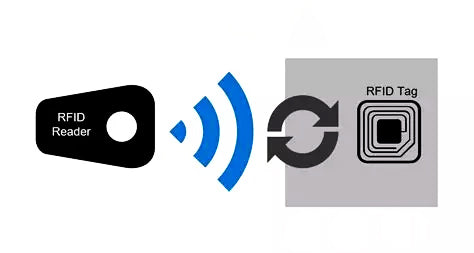There could be several reasons why RFID (Radio-Frequency Identification) electronic labels cannot be read. RFID technology relies on radio waves to communicate data between an RFID reader and an RFID tag. If the tags cannot be read, it's typically due to one or more of the following reasons:
-
Tag Placement and Orientation: The orientation and placement of the RFID tag on the object can affect its ability to be read. If the tag is facing away from the reader or is obstructed by other materials, it may not be able to communicate effectively.
-
Distance: RFID tags have a limited read range, typically ranging from a few centimeters to several meters. If the distance between the RFID reader and the tag is too great, the reader may not be able to capture the tag's signal.
-
Interference: Other electronic devices or materials can interfere with the radio signals used by RFID technology. Metal surfaces and liquids can absorb or reflect the radio waves, preventing effective communication.
-
Frequency Mismatch: RFID systems operate at different frequency bands, such as low-frequency (LF), high-frequency (HF), and ultra-high-frequency (UHF). If the reader and the tag are not operating on the same frequency, they won't be able to communicate.
-
Power Issues: RFID tags can be either passive (powered by the reader's signal) or active (with an internal power source). If a passive tag doesn't receive enough power from the reader, it may not be able to transmit a response signal.
-
Reader Configuration: Incorrect settings on the RFID reader, such as the wrong frequency or power level, can prevent it from effectively reading tags.
-
Tag Failure: RFID tags, like any electronic components, can fail due to manufacturing defects or wear and tear. A faulty tag won't be able to respond to the reader's signals.
-
Signal Absorption: Some materials can absorb RFID signals, effectively blocking communication between the tag and the reader. For example, water-based substances can attenuate RFID signals.
-
Collision and Noise: In environments with multiple RFID tags and readers, signals from different tags can interfere with each other, leading to data collision and making it difficult for the reader to distinguish individual tags.
-
Environmental Factors: Environmental conditions such as extreme temperatures, humidity, and electromagnetic interference can impact the performance of RFID systems.
To troubleshoot and resolve these issues, it's important to ensure proper tag placement, check for interference, verify that the reader and tag are on the same frequency, adjust reader settings as needed, and test different configurations in the specific environment where the RFID system is being used.









